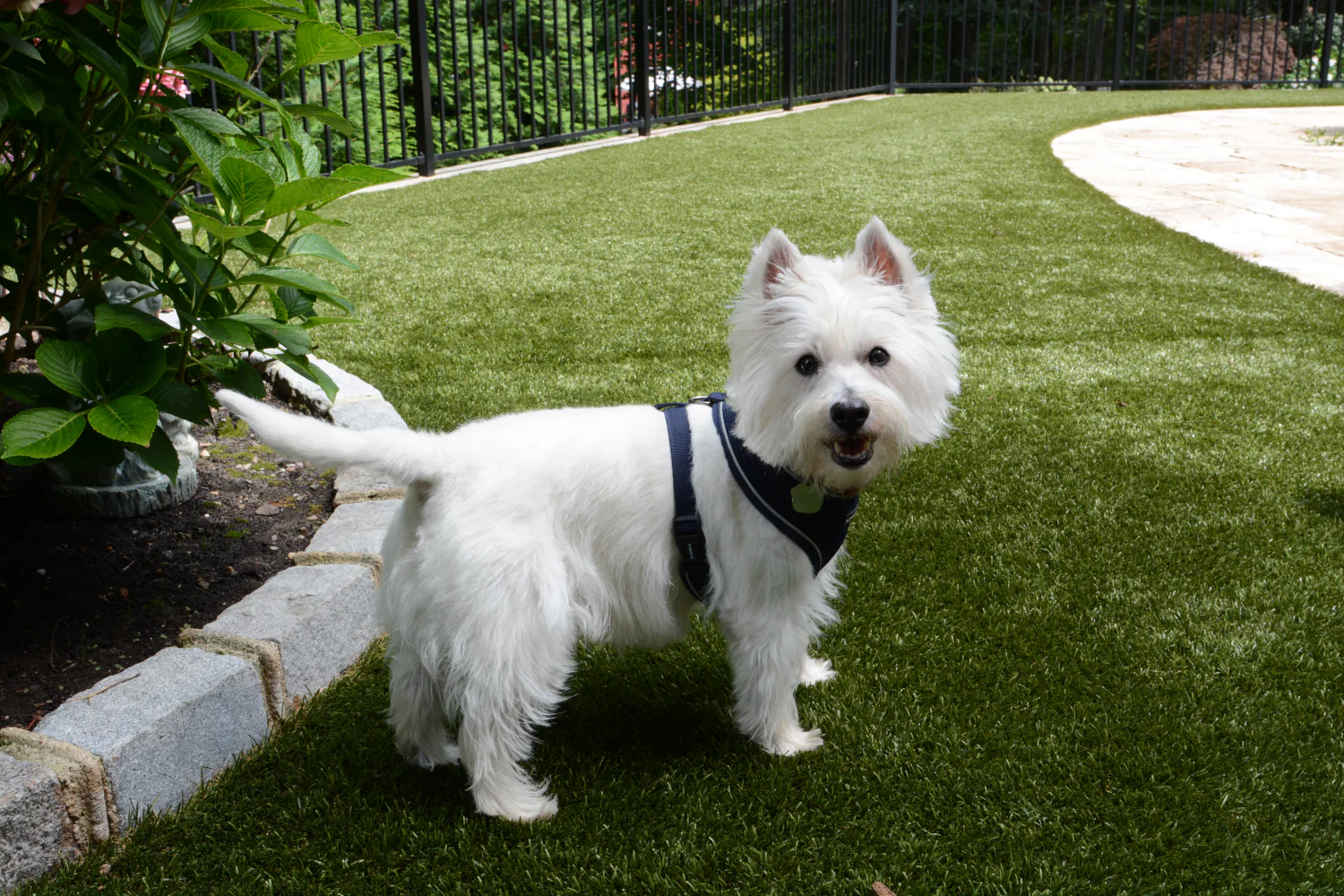How to Avoid Pet Turf Mistakes

You chose artificial grass for the low upkeep and clean look — smart move. But pets change the equation. Here’s a quick guide to the top issues that happen to fake grass for dogs and exactly what to do about each one, in simple steps.
1. NOT PICKING UP DOG POOP
What happens: A missed mess dries, spreads, or soaks into the infill.
Why it matters: Hardened piles can trap bacteria and leave stains.
Fast fix: Remove and throw away as soon as you can. If traces are left, use a soft brush and a hose to lift it out.
Habit to build: Keep a pooper scooper and covered container near the yard for quick cleanups.
2. CONCENTRATED URINE SPOTS
What happens: Dogs pick the same areas and urine pools there.
Why it matters: Bad smells and damaged infill may follow.
Fast fix: Spray the area with water periodically to prevent buildup, especially if weather is dry. For persistent odors, a enzyme spray made for artificial turf might be needed when using regular sand infill. Using odor-resistant SWG/Shaw K9 sane stops odor completely.
Preventive move: Rotate play zones or use distractions to spread traffic around.
3. DIGGING, CHEWING, AND NAIL DAMAGE
What happens: Dogs paw at the ground, gnaw turf, or their nails catch seams.
Why it matters: Rips, loose edges, and damaged fibers wear it out early and create tripping spots.
Fix: Keep claws short and re-secure any lifted edges with ground stakes or approved bonding adhesive.
Prevention: Give dogs a specific digging area and provide chew toys.
4. POOR DRAINAGE AND STANDING WATER
What happens: Water collects after storms or heavy use.
Why it matters: Puddles encourage mold, fungus, and mildew and make turf soggy.
Fast fix: Remove debris from drains. Check seams near drains to check for blockages.
When to call a pro: If the same spot stays wet repeatedly, the installation may need correction.
5. MATTED TURF FIBERS
What happens: High-traffic play zones start to look worn and compressed.
Why it matters: Compacted infill traps dirt and debris and reduces cushioning.
Fast fix: Rake fibers upright with a soft-bristle broom.
Routine: Brush busy play spots once a month to keep the turf upright.
6. USING THE WRONG CLEANING PRODUCTS
What happens: Harsh chemicals break down the backing and fibers.
Why it matters: Discoloration, damaged seams, and reduced turf life.
Fast fix: Flush with water thoroughly and switch to pet-safe, turf-approved cleaners. A natural vinegar and water mix works for many odor issues.
Note: Avoid solvent-based products and wire bristles.
QUICK CARE CHECKLIST
- Pick up waste within a few hours
- Flush urine spots at least once a week
- Brush high-traffic zones monthly
- Keep food and messy treats on a mat
- Choose pet-safe products for synthetic turf
- Check drainage after heavy storms
NEED A DEEP PROFESSIONAL CLEANING
Little habits keep your artificial turf for dogs odor-free and appearing well-kept. If you need help — from a deep clean to fixing drainage issues or refreshing infill — Southwest Greens can take care of it so your backyard stays pet-friendly and guest-ready. Reach out, and we’ll recommend solutions for your yard.
